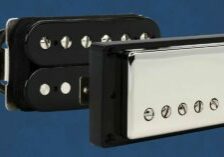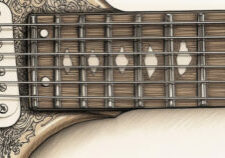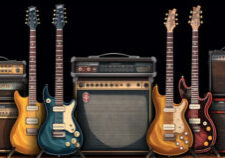Different types of electric guitar pickups convert string vibrations into electrical signals that can be amplified and heard through a speaker. Selecting the appropriate pickup is essential in achieving your desired sound. To help you choose the right pickup for your desired tone, here is what you need to know.
Understanding Electric Guitar Pickups
Electric guitar pickups consist of magnets wrapped in copper wire coils. When a string vibrates over these magnets, it creates an electrical current that is sent to an amplifier. The type of pickup used affects the tone and sound quality produced by the guitar.
Different Types of Electric Guitar Pickups
There are several types of electric guitar pickups available on the market today. Each type has its unique characteristics that affect tone and sound quality.
Single-Coil Pickups
The bright and clear tone produced by single-coil pickups is particularly popular among musicians who play genres such as country, blues, and rock, as it helps to create a sound that is both cutting and articulate. You’ll find single coils on Fender strats, teles and similar brands that more or less copy they same style. Single-coil pickups are capable of capturing subtle nuances and variations in playing style, allowing the player to express a wide range of tonal variations. Additionally, the clarity and definition of single-coil pickups make them well-suited for use in recording studios, as they can often cut through a mix and provide a clear, focused sound.
Humbucker Pickups
Humbucker pickups produce a warm, fat tone with less noise than single-coil pickups due to their design using two coils instead of one. They have higher output levels than single-coil pickups but offer less dynamic range.
P90 Pickups
P90 pickups produce a mid-range growl with excellent sustain and clarity similar to single-coil pickups but with more power like humbuckers.
Soap Bar Pickups
Soap bar pickups are similar in design to P90s but have a rectangular shape instead of being round like P90s.
Active vs Passive Pickups
Active and passive refer to how much power is required for the pickup to function correctly. Active pickups require batteries while passive ones do not need them as they rely on the guitar’s magnetic field to generate an electrical signal.
Active pickups have a higher output level than passive ones, which can result in more distortion and sustain. However, they require batteries that need to be replaced regularly.
Output Level of the Pickup
The output level of a pickup is one of the most important factors to consider when choosing a guitar pickup. It refers to the amount of power the pickup produces, which in turn affects the overall sound and tone of the guitar. Generally speaking, higher output levels produce more volume and distortion, while lower output levels offer less volume but greater dynamic range.
When a pickup has a higher output level, it means that it is able to produce a stronger electrical signal, which results in a louder and more powerful sound. This is ideal for genres such as heavy metal and hard rock, where a lot of distortion and volume is necessary to achieve the desired sound. A high-output pickup can also help to drive an amp harder, resulting in a more saturated and overdriven tone.
On the other hand, pickups with lower output levels are better suited for genres such as blues and jazz, where a clean and dynamic sound is desired. With lower output pickups, there is less distortion and less volume, but there is greater clarity and detail in the sound. This allows for a greater range of expression and nuance in the player’s playing.
What Electric Guitar Pickups Are Right For Me?
Choosing the right electric guitar pickup is crucial to achieving your desired sound. Consider factors such as tone, output level, and whether you prefer active or passive pickups when making your decision. Ultimately, when deciding what electric guitar pickups to use, it comes down to personal preference and experimentation with different types of pickups until you find one that suits your playing style and musical taste.





